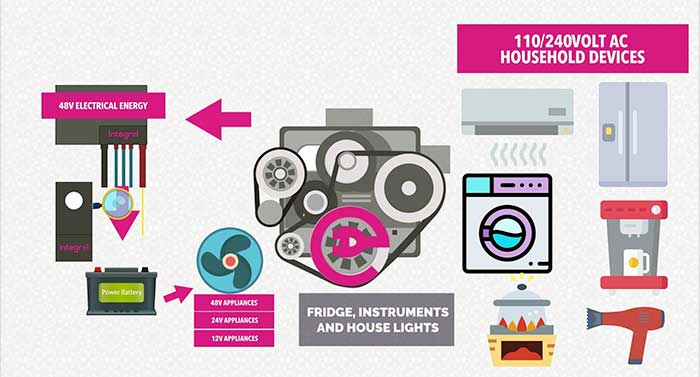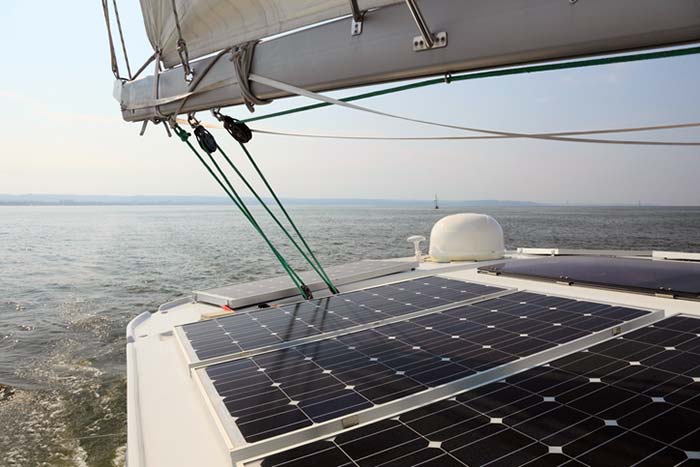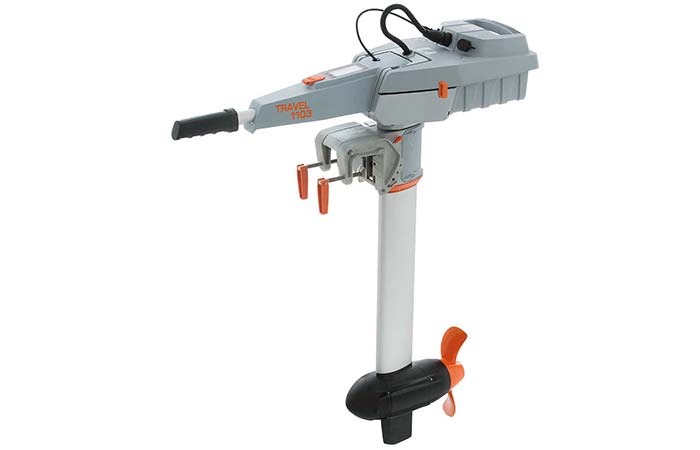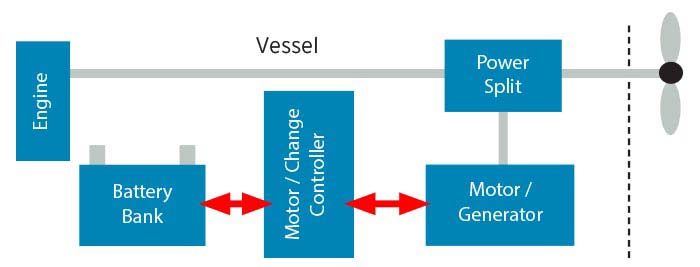Advertisement
Eyeing an electric boat but not quite ready to take the plunge? Here are some ways to "electrify" your current cruiser.
The benefits of electric boating are clear: silent motors, increased torq, renewable recharging, and reduced fossil fuel consumption. Fortunately, you don't need an electric boat to take advantage of many of these benefits. Here are five ways to use e-boating technology on your current boat.

1. High Output Alternators
Fancy additional onboard luxuries like air conditioning, ice makers, washing machines, and espresso on demand? Diesel engines can be woefully inefficient at providing house power at low RPMs (i.e., at the dock or anchor). In studying hybrid technology, marine expert, Nigel Calder recognized that it was possible to obtain significant house-side fuel efficiency savings. "On many boats, you can improve the [house load] fuel efficiency by 500%," he says. Calder designed Integrel, a device that can completely replace a stand-alone generator. It works by using up spare capacity, efficiently loading an inboard diesel engine to up to 9kW of power to the batteries without compromising engine performance. Because Integrel loads the engine to optimum efficiency, it can result in fuel savings of up to 25%.

2. Lithium-Ion Batteries
If you find yourself constantly fretting about draining your batteries, it may be time for an upgrade. Lithium-ion batteries boast roughly double the energy capacity, meaning you can halve the number of batteries (and weight) and get the same amount of energy per cycle. Recharging is more flexible, making it possible to partially charge without shortening the life of the battery. Lithium-ion batteries also have longer life spans and don't need to be watered, meaning little to no maintenance. However, it's not simply a matter of swapping out your house bank. These high-tech batteries require advanced battery management systems in order to operate safely.

Photo: Getty Images/LSaloni
3. Solar Panels
Enjoy the silence at anchor without having to run a noisy generator to top up your house batteries. Photovoltaic technology has come a long way in recent years, with some boats, like Silent Yachts catamarans, running on 100% solar. These days, many solar panels for marine applications boast efficiencies north of 20% and come in a range of versatile options like semiflexible panels which can be zipped into your Bimini and dodger and walk-on panels which can be fastened to the deck.

4. Electric Outboards
Experience the magic of silent propulsion by switching out your dinghy's gas outboard for an electric one. Several manufacturers offer lines of small electric outboards that are lighter, cleaner, and quieter than their gas counterparts. For instance, Torqeedo's 3HP Travel 1103 C weighs under 40 lbs, is completely waterproof, and includes an integrated 915 Wh lithium battery with a range of 18 miles at 3.0 knots (half throttle). Worried about running out of juice? It also has an onboard computer that calculates your remaining range and alerts you when the battery is low.

A parallel hybrid maintains the mechanical connection between the engine and prop shaft. The electric motor acts on the drive shaft in parallel with the engine.
5. Electric Retrofit
Some boat owners are opting to rip out their old engines and replace them with electric motors. Thunderstruck Motors offers DIY retrofit kits for sailboats, ranging from 5 to 18kW (7 to 24 hp). The original electric boating company, Elco Motor Yachts (founded in 1893), retrofits classic wooden boats with inboard electric motors. Hybrid retrofits are another option, especially for those considering repowering a yacht with significant house-side power requirements (e.g., overnight air conditioning), in which cases a hybrid installation might not cost much more than a traditional diesel install.
